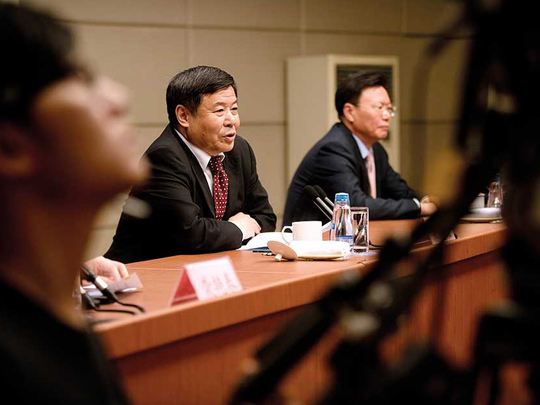
Beijing: Beijing and Washington announced Friday an agreement giving US beef, natural gas and certain financial services access to China’s massive market in a deal highlighting the warm ties nurtured by their presidents.
The deal was unveiled a month after Chinese President Xi Jinping and Donald Trump launched a 100-day action plan on economic cooperation during their meeting at the US leader’s Mar-a-Lago resort in Florida.
Relations between the two governments have been warmer than expected after Trump lashed out at Beijing throughout the US presidential campaign.
“We are excited about US trade policies and I think you probably saw we made an announcement of a 100 day economic plan with the Chinese so I think we’re very happy with how we’re proceeding with the Chinese,” US Treasury Secretary Steven Mnuchin said as he arrived for a meeting of G7 finance ministers in Italy.
US Commerce Secretary Wilbur Ross told reporters at the White House that the deal will help reduce the US trade deficit with China, which reached nearly $350 billion (Dh1.28 trillion) last year.
“This was pretty much a Herculean accomplishment to get this done,” Ross said, according to Bloomberg News.
“This is more than has been done in the whole history of US-China relations on trade,” Ross said.
In Beijing, foreign ministry spokesman Geng Shuang said the two countries “enjoy very close economic cooperation”.
Currency manipulator
“The nature of this relationship is mutually beneficial. The two sides decided to press ahead with this economic plan and the fact that much progress has been made in a short amount of time shows ... we can establish more cooperation for the joint benefit of the people,” he said.
During last year’s election, Trump had threatened to impose trade tariffs and label Beijing a currency manipulator, neither of which he has done.
But his tone changed after he took office and met with Xi in April, calling the Chinese leader a “good man” who was trying to help Trump rein in North Korea.
But a report by Capital Economics consultancy saw “paltry trade benefits” from the deal because it would amount to “just a few billion dollars.”
The agreement “won’t make any meaningful difference to the bilateral trade imbalance, which could still trigger a flare-up of tensions between the two sides in the future,” it said.
Under the agreement announced by both nations, China will authorise US beef imports by July 16 while the United States will lift barriers on Chinese cooked poultry exports “as soon as possible”.
China banned US beef following a case of mad cow disease in the United States in 2003.
Beijing had announced an end to a 14-year embargo on American beef last year, but the decision has yet to be implemented.
Diversification
Regaining access to China, the world’s most populous country with 1.4 billion people, has been a key goal of American cattle farmers.
The deal will also allow Chinese companies to buy liquefied natural gas from the United States.
“This will let China diversify, somewhat, their sources of supply and will provide a huge export market for American LNG producers,” Ross said.
China will also give permission to wholly foreign-owned financial services firms to provide credit rating services in the country.
And it will give “full and prompt market access” to US-owned suppliers of electronic payment services, including credit and debit card transactions — something China had already said it would do in 2015 after losing a case at the World Trade Organisation.
The joint statement said the United States would send a delegation to China’s One Belt, One Road summit on Sunday and Monday — Xi’s signature project.
Leaders from nearly 30 nations are attending the forum, which will showcase Xi’s grand plan to revive ancient Silk Road trade routes by bankrolling rail, maritime and road projects across Asia, Europe and Africa.












